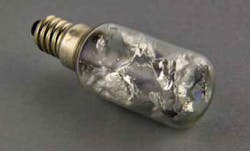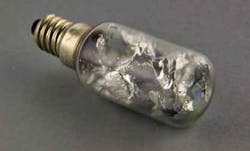Then: Camera light sources
Though Thomas Edison is credited with the invention of the first electric light, it was Alessandro Volta, the inventor of the forerunner of today’s storage battery, who noticed that when wires were connected to the terminals of such devices, they would glow. Then in 1812, using a large voltaic battery, Sir Humphry Davy demonstrated that an arch discharge would occur. In 1860, Michael Faraday demonstrated a lamp exhausted of air that used two carbon electrodes to produce light. Building on these discoveries, Edison formed the Edison Electric Light Co. in 1878 and demonstrated his version of an incandescent lamp just one year later. To extend the life of the lamps, Alexander Just and Franjo Hannaman developed and patented an electric bulb with a Tungsten filament in 1904, showing that lamps filled with an inert gas produce a higher luminosity than vacuum-based tubes.
Other significant, early developments include a fluorescent lamp that used nitrogen gas built by Daniel Moore in 1896, and the creation of a practical version of the halogen lamp in 1955 by G.E. workers Elmer Fridrich and Emmitt Wiley.

